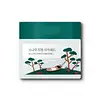What's inside
What's inside
 Key Ingredients
Key Ingredients

 Benefits
Benefits

 Concerns
Concerns

No concerns
 Ingredients Side-by-side
Ingredients Side-by-side

Water
Skin ConditioningDaucus Carota Sativa Root Extract
Skin ConditioningGlycerin
HumectantButylene Glycol
HumectantBeta-Glucan
Skin Conditioning1,2-Hexanediol
Skin ConditioningUndaria Pinnatifida Extract
Skin ConditioningSodium Hyaluronate
HumectantCitric Acid
BufferingSodium Phytate
Allantoin
Skin ConditioningSodium Citrate
BufferingHydroxyethylcellulose
Emulsion StabilisingMaltodextrin
AbsorbentC12-14 Pareth-12
EmulsifyingSaccharide Hydrolysate
HumectantDaucus Carota Sativa Seed Oil
EmollientOlea Europaea Fruit Oil
MaskingPogostemon Cablin Leaf Oil
MaskingLavandula Hybrida Oil
EmollientSalvia Officinalis Oil
MaskingArtemisia Vulgaris Oil
PerfumingCitrus Aurantium Dulcis Peel Oil
MaskingEthylhexylglycerin
Skin ConditioningWater, Daucus Carota Sativa Root Extract, Glycerin, Butylene Glycol, Beta-Glucan, 1,2-Hexanediol, Undaria Pinnatifida Extract, Sodium Hyaluronate, Citric Acid, Sodium Phytate, Allantoin, Sodium Citrate, Hydroxyethylcellulose, Maltodextrin, C12-14 Pareth-12, Saccharide Hydrolysate, Daucus Carota Sativa Seed Oil, Olea Europaea Fruit Oil, Pogostemon Cablin Leaf Oil, Lavandula Hybrida Oil, Salvia Officinalis Oil, Artemisia Vulgaris Oil, Citrus Aurantium Dulcis Peel Oil, Ethylhexylglycerin
Pinus Densiflora Leaf Extract
AntimicrobialWater
Skin ConditioningPropanediol
SolventDipropylene Glycol
Humectant1,2-Hexanediol
Skin ConditioningCentella Asiatica Extract
CleansingBetaine
HumectantSodium Hyaluronate
HumectantButylene Glycol
HumectantCaprylyl Glycol
EmollientCentella Asiatica Leaf Extract
Skin ConditioningCinnamomum Camphora Leaf Extract
MaskingPanthenol
Skin ConditioningGlycoproteins
Skin ConditioningEthylhexylglycerin
Skin ConditioningDipotassium Glycyrrhizate
HumectantMelia Azadirachta Leaf Extract
Skin ConditioningMelia Azadirachta Flower Extract
Skin ConditioningMadecassoside
AntioxidantAsiaticoside
AntioxidantAsiatic Acid
Skin ConditioningMadecassic Acid
Skin ConditioningHydroxyacetophenone
AntioxidantGluconolactone
Skin ConditioningCapryloyl Salicylic Acid
ExfoliatingC12-14 Pareth-12
EmulsifyingSuccinic Acid
BufferingAmmonium Acryloyldimethyltaurate/Vp Copolymer
Sodium Citrate
BufferingPantolactone
HumectantDisodium EDTA
Pinus Densiflora Leaf Extract, Water, Propanediol, Dipropylene Glycol, 1,2-Hexanediol, Centella Asiatica Extract, Betaine, Sodium Hyaluronate, Butylene Glycol, Caprylyl Glycol, Centella Asiatica Leaf Extract, Cinnamomum Camphora Leaf Extract, Panthenol, Glycoproteins, Ethylhexylglycerin, Dipotassium Glycyrrhizate, Melia Azadirachta Leaf Extract, Melia Azadirachta Flower Extract, Madecassoside, Asiaticoside, Asiatic Acid, Madecassic Acid, Hydroxyacetophenone, Gluconolactone, Capryloyl Salicylic Acid, C12-14 Pareth-12, Succinic Acid, Ammonium Acryloyldimethyltaurate/Vp Copolymer, Sodium Citrate, Pantolactone, Disodium EDTA
 Reviews
Reviews

Ingredients Explained
These ingredients are found in both products.
Ingredients higher up in an ingredient list are typically present in a larger amount.
1,2-Hexanediol is a synthetic liquid and another multi-functional powerhouse.
It is a:
- Humectant, drawing moisture into the skin
- Emollient, helping to soften skin
- Solvent, dispersing and stabilizing formulas
- Preservative booster, enhancing the antimicrobial activity of other preservatives
Butylene Glycol (or BG) is used within cosmetic products for a few different reasons:
Overall, Butylene Glycol is a safe and well-rounded ingredient that works well with other ingredients.
Though this ingredient works well with most skin types, some people with sensitive skin may experience a reaction such as allergic rashes, closed comedones, or itchiness.
Learn more about Butylene GlycolC12-14 Pareth-12 is created from a mixture of synthetic C12-14 alcohols that have about 12 moles of ethylene oxide.
It is an emulsifying and cleansing ingredient. Emulsifier help prevent ingredients from separating, such as oils and waters.
Ethylhexylglycerin (we can't pronounce this either) is commonly used as a preservative and skin softener. It is derived from glyceryl.
You might see Ethylhexylglycerin often paired with other preservatives such as phenoxyethanol. Ethylhexylglycerin has been found to increase the effectiveness of these other preservatives.
Sodium Citrate is the sodium salts of citric acid. In skincare, it is used to alter pH levels and acts as a preservative.
Its main functions are to maintain the pH of a product and neutralize metal ions.
The acidity of our skin is maintained by our glands and skin biome; normal pH level of skin is slightly acidic (~4.75-5.5).
Being slightly acidic allows our skin to create an "acid mantle". This acid mantle is a thin barrier that protects our skin from bacteria and contaminants.
Learn more about Sodium CitrateSodium Hyaluronate is hyaluronic acid's salt form. It is commonly derived from the sodium salt of hyaluronic acid.
Like hyaluronic acid, it is great at holding water and acts as a humectant. This makes it a great skin hydrating ingredient.
Sodium Hyaluronate is naturally occurring in our bodies and is mostly found in eye fluid and joints.
These are some other common types of Hyaluronic Acid:
Learn more about Sodium HyaluronateWater. It's the most common cosmetic ingredient of all. You'll usually see it at the top of ingredient lists, meaning that it makes up the largest part of the product.
So why is it so popular? Water most often acts as a solvent - this means that it helps dissolve other ingredients into the formulation.
You'll also recognize water as that liquid we all need to stay alive. If you see this, drink a glass of water. Stay hydrated!
Learn more about Water